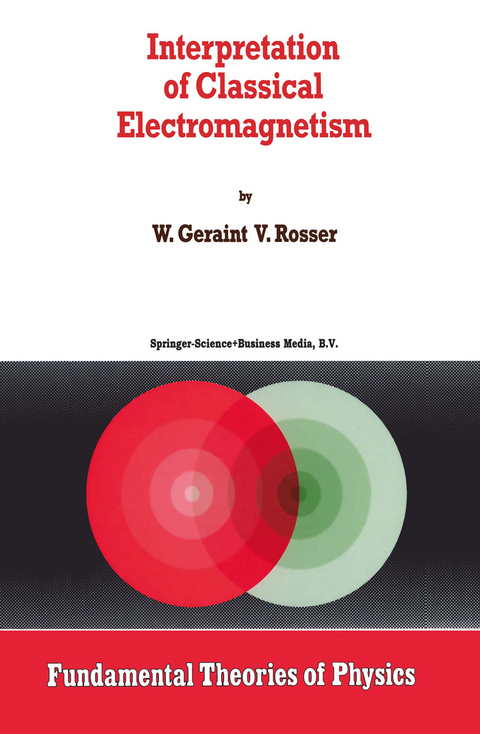
Interpretation of Classical Electromagnetism
Springer (Verlag)
978-90-481-4739-7 (ISBN)
1. A Typical Conventional Development of Maxwell’s Equations.- 2. The Scalar Potential ? and the Vector Potential A.- 3. The Electric and Magnetic Fields due to an Accelerating Classical Point Charge.- 4. Development of Maxwell’s Equations from the Expressions for the Electric and Magnetic Fields due to a Moving Classical Point Charge.- 5. Electric Fields due to Electrical Circuits.- 6. Magnetic Fields due to Electrical Circuits.- 7. Quasi-Stationary Phenomena and AC Theory.- 8. Forces, Energy and Electromagnetic Momentum.- 9. Stationary Dielectrics and Stationary Magnetic Materials.- 10. Special Relativity and Classical Electromagnetism.- Appendix A. Mathematical Methods.- A1. A summary of the formulae of vector analysis.- A1.1. Scalar and vector products.- A1.2. The gradient of a scalar.- A1.3. The divergence of a vector.- A1.4. The curl of a vector.- A1.5. The Laplacian operator.- A1.6. Some useful relations.- A1.7. Gauss’ mathematical theorem.- A1.8. Stokes’ theorem.- A1.9. Cylindrical coordinates.- A1.10. Spherical polar coordinates.- A2. The partial derivatives of macroscopic field variables.- A3. Some useful mathematical relations.- A4. The corrections to the differential form of the Biot-Savart law for steady currents.- Appendix B. Conduction Current Flow in Stationary Conductors.- B 1. Example of the mode of action of a source of emf.- B2. Location of the charge distributions associated with conduction current flow.- B3. Magnitudes of the surface and boundary charge distributions associated with conduction current flow.- B4. Models of conduction current flow in a stationary conductor.- B5. Energy propagation in DC circuits.- Appendix C. The Electric and Magnetic Fields due to an Accelerating Classical Point Charge.- Cl. Introduction.- C2. Calculationof the electric field.- C3. Calculation of the magnetic field.- Appendix E. The Transformations of Special. Relativity.
| Erscheint lt. Verlag | 5.12.2010 |
|---|---|
| Reihe/Serie | Fundamental Theories of Physics ; 78 |
| Zusatzinfo | XVIII, 426 p. |
| Verlagsort | Dordrecht |
| Sprache | englisch |
| Maße | 155 x 235 mm |
| Themenwelt | Mathematik / Informatik ► Mathematik ► Angewandte Mathematik |
| Naturwissenschaften ► Physik / Astronomie ► Allgemeines / Lexika | |
| Naturwissenschaften ► Physik / Astronomie ► Elektrodynamik | |
| Naturwissenschaften ► Physik / Astronomie ► Optik | |
| Technik ► Elektrotechnik / Energietechnik | |
| ISBN-10 | 90-481-4739-5 / 9048147395 |
| ISBN-13 | 978-90-481-4739-7 / 9789048147397 |
| Zustand | Neuware |
| Informationen gemäß Produktsicherheitsverordnung (GPSR) | |
| Haben Sie eine Frage zum Produkt? |
aus dem Bereich


